- Home
- Ursula K. Le Guin
The Telling Page 8
The Telling Read online
Page 8
She had arrived at a definition of Akan religion. For a minute she was perfectly satisfied with it and with herself.
Then she found she was thinking about a group of myths that Ottiar Uming had been telling. The central figure, Ezid, a strange, romantic character who appeared sometimes as a beautiful, gentle young man and sometimes as a beautiful, fearless young woman, was called "the Immortal." She added a note: "What about Immortal Ezid'? Does this imply belief in an afterlife? Is Ezid one person, two, or many? Immortal/living-forever seems to mean: intense, repeated many times, famous, perhaps also a special 'educated' meaning: in perfect bodily/spiritual health, living wisely. Check this."
Again and again in her notes, after every conclusion: Check this. Conclusions led to new beginnings. Terms changed, were corrected, recorrected. Before long she became unhappy with her definition of the system as a religion; it seemed not incorrect, but not wholly adequate. The term philosophy was even less adequate. She went back to calling it the system, the Great System. Later she called it the Forest, because she learned that in ancient times it had been called the way through the forest. She called it the Mountain when she found that some of her teachers called what they taught her the way to the mountain. She ended up calling it the Telling. But that was after she came to know Maz Elyed.
She had long debates with her noter about whether any word in Dovzan, or in the older and partly non-Dovzan vocabulary used by 'educated' people, could be said to mean sacred or holy. There were words she translated as power, mystery, not-controlled-by-people, part-of-harmony. These terms were never reserved for a certain place or type of action. Rather it appeared that in the old Akan way of thinking any place, any act, if properly perceived, was actually mysterious and powerful, potentially sacred. And perception seemed to involve description—telling about the place, or the act, or the event, or the person. Talking about it, making it into a story.
But these stories weren't gospel. They weren't Truth. They were essays at the truth. Glances, glimpses of sacredness. One was not asked to believe, only to listen.
"Well, that's how I learned the story," they would say, having told a parable or recounted a historical episode or recited an ancient and familiar legend. "Well, that's the way this telling goes."
The holy people in their stories achieved holiness, if that was what it was, by all kinds of different means, none of which seemed particularly holy to Sutty. There were no rules, such as poverty chastity obedience, or exchanging one's worldly goods for a wooden begging bowl, or reclusion on a mountaintop. Some of the heroes and famous maz in the stories were flamboyantly rich; their virtue had apparently consisted in generosity—building great beautiful umyazu to house their treasures, or going on processions with hundreds of companions all mounted on eberdin with silver harnesses. Some of the heroes were warriors, some were powerful leaders, some were shoemakers, some were shopkeepers. Some of the holy people in the stories were passionate lovers, and the story was about their passion. A lot of them were couples. There were no rules. There was always an alternative. The story-tellers, when they commented on the legends and histories they told, might point out that that had been a good way or a right way of doing something, but they never talked about the right way. And good was an adjective, always: good food, good health, good sex, good weather. No capital letters. Good or Evil as entities, warring powers, never.
This system wasn't a religion at all, Sutty told her noter with increasing enthusiasm. Of course it had a spiritual dimension. In fact, it was the spiritual dimension of life for those who lived it. But religion as an institution demanding belief and claiming authority, religion as a community shaped by a knowledge of foreign deities or competing institutions, had never existed on Aka.
Until, perhaps, the present time.
Aka's habitable lands were a single huge continent with an immensely long archipelago off its eastern coast. Dovza was the farthest southwestern region of the great continent. Undivided by oceans, the Akans were physically all of one type with slight local variations. All the Observers had remarked on this, all had pointed out the ethnic homogeneity, the lack of societal and cultural diversity, but none of them had quite realised that among the Akans there were no foreigners. There had never been any foreigners, until the ships from the Ekumen landed.
It was a simple fact, but one remarkably difficult for the Terran mind to comprehend. No aliens. No others, in the deadly sense of otherness that existed on Terra, the implacable division between tribes, the arbitrary and impassable borders, the ethnic hatreds cherished over centuries and millennia. 'The people' here meant not my people, but people—everybody, humanity. 'Barbarian' didn't mean an incomprehensible outlander, but an uneducated person. On Aka, all competition was familial. All wars were civil wars.
One of the great epics Sutty was now recording in pieces and fragments concerned a long-running and bloody feud over a fertile valley, which began as a quarrel between a brother and sister over inheritance. Struggles between regions and city-states for economic dominance had gone on all through Akan history, flaring often into armed conflict. But these wars and feuds had been fought by professional soldiers, on battlefields. It was a very rare thing, and treated in the histories and annals as shamefully, punishably wrong, for soldiers to destroy cities or farmlands or to hurt civilians. Akans fought each other out of greed and ambition for power, not out of hatred and not in the name of a belief. They fought by the rules. They had the same rules. They were one people. Their system of thought and way of life had been universal. They had all sung one tune, though in many voices.
Much of this communality, Sutty thought, had depended on the writing. Before the Dovzan cultural revolution there had been several major languages and innumerable dialects, but they had all used the same ideograms, mutually intelligible to all. Clumsy and archaic as nonalphabetic scripts were in some respects, they could bond and preserve, as Chinese ideograms had done on Earth, a great diversity of languages and dialects; and they made texts written thousands of years ago readable without translation even though the sounds of the words had changed out of all recognition. Indeed, to the Dovzan reformers, that may have been the chief reason for getting rid of the old script: it was not only an impediment to progress but an actively conservative force. It kept the past alive.
In Dovza City she had met nobody who could, or who admitted they could, read the old writing. Her few early questions concerning it met with such disapproval and blank rejection that she promptly learned not to mention the fact that she could read it. And the officials dealing with her never asked. The old writing had not been used for decades; it probably never occurred to them that, through the accident of time lapse during space travel, it had been the writing she learned.
She had not been entirely foolish to wonder, there in Dovza City, if she might actually be the only person in the world who could now read it, and not entirely foolish to be frightened by the thought. If she carried the entire history of a people, not her own people, in her head, then if she forgot one word, one character, one diacritical mark, that much of all those lives, all those centuries of thought and feeling, would be lost forever....
It had been a vast relief to her to find, here in Okzat-Ozkat, many people, old and young, even children, carrying and sharing that precious cargo. Most could read and write a few dozen characters, or a few hundred, and many went on to full literacy. In the Corporation schools, children learned the Hainish-derived alphabet and were educated as producer-consumers; at home or in illicit classes in little rooms behind a shop, a workshop, a warehouse, they learned the ideograms. They practiced writing the characters on small blackboards that could be wiped clean with a stroke. Their teachers were working people, householders, shopkeepers, common people of the city.
These teachers of the old language and the old way, the 'educated people,' were called maz. Yoz was a term indicating respectful equality; maz as an address indicated increased respect. As a title or a noun, it meant, as Sutty began to un
derstand it, a function or profession that wasn't definable as priest, teacher, doctor, or scholar, but contained aspects of them all.
All the maz Sutty met, and as the weeks went on she met most of the maz in Okzat-Ozkat, lived in more or less comfortable poverty. Usually they had a trade or job to supplement what they were paid as maz for teaching, dispensing medicine and counsel on diet and health, performing certain ceremonies such as marriage and burial, and reading and talking in the evening meetings, the tellings. The maz were poor, not because the old way was dying or was treasured only by the old, but because the people who paid them were poor. This was a hard-bitten little city, marginal, without wealth. But the people supported their maz, paid for their teaching "by the word," as they said. They came to the house of one maz or another in the evening to listen to the stories and the discussions, paying regular fees in copper money, small paper bills. There was no shame in the transaction on either side, no hypocrisy of 'donation': cash was paid for value received.
Many children were brought along in the evening to the tellings, to which they listened, more or less, or fell quietly asleep. No fee was charged for children until they were fifteen or so, when they began to pay the same fees as adults. Adolescents favored the sessions of certain maz who specialised in reciting or reading epics and romances, such as The Valley War and the tales of Ezid the Beautiful. Exercise classes of the more vigorous and martial kind were full of young men and women.
The maz, however, were mostly middle-aged or old, again not because they were dying out as a group, but because, as they said, it took a lifetime to learn how to walk in the forest.
Sutty wanted to find out why the task of becoming educated was interminable; but the task of finding out seemed to be interminable itself. What was it these people believed? What was it they held sacred? She kept looking for the core of the matter, the words at the heart of the Telling, the holy books to study and memorise. She found them, but not it. No bible. No koran. Dozens of upanishads, a million sutras. Every maz gave her something else to read. Already she had read or heard countless texts, written, oral, both written and oral, many or most of them existing in more than one mode and more than one version. The subject matter of the tellings seemed to be endless, even now, when so much had been destroyed.
Early in the winter she thought she had found the central texts of the system in a series of poems and treatises called The Arbor. All the maz spoke of it with great respect, all of them quoted from it. She spent weeks studying it. As well as she could determine, it had mostly been written between fifteen hundred and a thousand years ago in the central region of the continent during a period of material prosperity and artistic and intellectual ferment. It was a vast compendium of sophisticated philosophical reasonings on being and becoming, form and chaos, mystical meditations on the Making and the Made, and beautiful, difficult, metaphysical poems concerning the One that is Two, the Two that are One, all interconnected, illuminated, and complicated by the commentaries and marginalia of all the centuries since. Uncle Hurree's niece, the scholar-pedant, rushed exulting into that jungle of significances, willing to be lost there for years. She was brought back to daylight only by her conscience, which trailed along carrying the heavy baggage of common sense, nagging: But this isn't the Telling, this is just a part of it, just a small part of it....
Conscience finally got decisive help in its task from Maz Oryen Viya, who mentioned that the text of The Arbor that Sutty had been coming to study at his house every day for a month was only a portion of, and in many places entirely different from, a text he had seen many years ago in a great umyazu in Amareza.
There was no correct text. There was no standard version. Of anything. There was not one Arbor but many, many arbors. The jungle was endless, and it was not one jungle but endless jungles, all burning with bright tigers of meaning, endless tigers....
Sutty finished scanning Oryen Viya's version of The Arbor into her noter, put the crystal away, knocked her inner pedant on the head, and started all over.
Whatever it was she was trying to learn, the education she was trying to get, was not a religion with a creed and a sacred book. It did not deal in belief. All its books were sacred. It could not be defined by symbols and ideas, no matter how beautiful, rich, and interesting its symbols and ideas. And it was not called the Forest, though sometimes it was, or the Mountain, though sometimes it was, but was mostly, as far as she could see, called the Telling. Why?
Well (said common sense, rudely), because what the educated people do all the time is tell stories.
Yes, of course (her intellect replied with some disdain) they tell parables, stories, that's how they educate. But what do they do?
She set out to observe the maz.
Back on Terra, when she first studied the languages of Aka, she had learned that all the major ones had a peculiar singular/dual pronoun, used for a pregnant woman or animal and for a married couple. She had met it again in The Arbor and many other texts, where it referred to the single/double trunk of the tree of being and also to the mythic-heroic figures of the stories and epics, who usually—like the producer-consumer heroes of Corporation propaganda—came in pairs. This pronoun had been banned by the Corporation. Use of it in speech or writing was punishable by fine. She had never heard it spoken in Dovza City. But here she heard it daily, though not publicly, spoken of and to the teacher-officiants, the maz. Why?
Because the maz were couples. They were always couples. A sexual partnership, heterosexual or homosexual, monogamous, lifelong. More than lifelong, for if widowed they never remarried. They took and kept each other's name. The Fertiliser's wife, Ang Sotyu, had been dead fifteen years, but he was still Sotyu Ang. They were two who were one, one who was two.
Why?
She got excited. She was on the track of the central principle of the system: it was the Two that are One. She must concentrate upon understanding it.
Obliging maz gave her many texts, all more or less relevant. She learned that from the interplay of the Two arise the triple Branches that join to make the Foliages, consisting of the Four Actions and the Five Elements, to which the cosmology and the medical and ethical systems constantly referred, and which were built into the architecture and were structural to the language, particularly in its ideogrammatic form.... She realised that she was getting into another jungle, a very ancient one, an appallingly exuberant one. She stood on the outskirts and peered in, yearning but cautious, with conscience whining behind her like a dog. Good dog, dharma dog. She did not go into that jungle.
She remembered that she had intended to find what it was that the maz actually did.
They performed, or enacted, or did, the Telling. They told.
Some people had only a little to tell. They owned a book or poem or map or treatise that they had inherited or been given, and that, at least once a year, generally in the winter, they displayed or read aloud or recited from memory to anybody who wanted to come. Such people were politely called educated people, and were respected for owning and sharing their treasure, but they were not maz.
The maz were professionals. They gave a major part of their life to acquiring and sharing what they told, and made their living by doing so.
Some of them, specialists in ceremonies, resembled the priests of conventional Terran religions, officiating at the rites of passage, marriages, funerals, welcoming the newborn into the community, celebrating the fifteenth birthday, which was considered an important and fortunate occasion (One plus Two plus Three plus Four plus Five). The tellings of such maz were mostly formulaic—chants and rituals and recitations of the most familiar hero tales.
Some maz were physicians, healers, herbalists, or botanists. Like the leaders of exercise and gymnastic arts, they told the body, and also listened to the body (the body that was the Tree, that was the Mountain). Their tellings were factual, descriptive, medical teachings.
Some maz worked mostly with books: they taught children and adults to write and read the ideo
grams, they taught the texts and ways of understanding them.
But the essential work of the maz, what gave them honor among the people, was telling: reading aloud, reciting, telling stories, and talking about the stories. The more they told, the more they were honored, and the better they told it, the better they were paid. What they talked about depended on what they knew, what they possessed of the lore, what they invented on their own, and, evidently, what they felt like talking about at the moment.
The incoherence of it all was staggering. During the weeks that Sutty had laboriously learned about the Two and the One, the Tree and the Foliage, she had gone every evening to hear Maz Ottiar Uming tell a long mythico-historical saga about the explorations of the Rumay among the Eastern Isles six or seven thousand years ago, and also gone several mornings a week to hear Maz Imyen Katyan tell the origins and history of the cosmos, name the stars and constellations, and describe the movements of the other four planets in the Akan system, while displaying beautiful, accurate, ancient charts of the sky. How did it all hang together? Was there any relation at all among these disparate things?

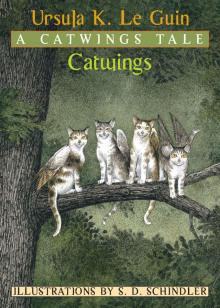 Catwings
Catwings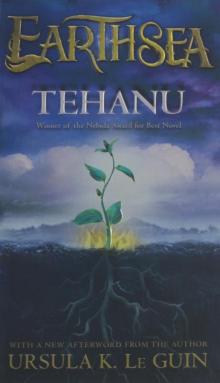 Tehanu
Tehanu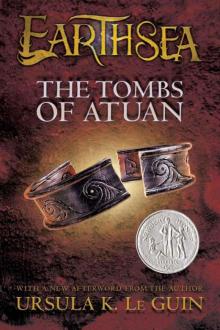 The Tombs of Atuan
The Tombs of Atuan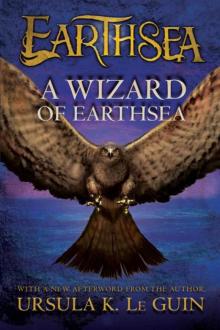 A Wizard of Earthsea
A Wizard of Earthsea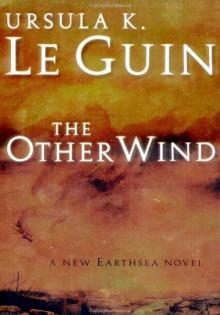 The Other Wind
The Other Wind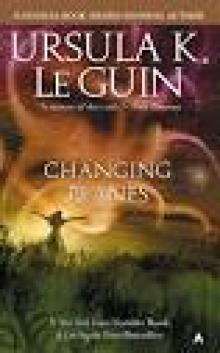 Ursula K. Le Guin
Ursula K. Le Guin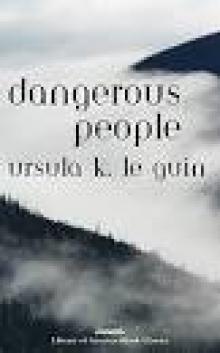 Dangerous People
Dangerous People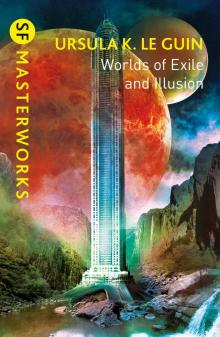 Worlds of Exile and Illusion: Rocannon's World, Planet of Exile, City of Illusions
Worlds of Exile and Illusion: Rocannon's World, Planet of Exile, City of Illusions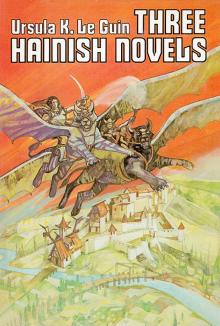 Three Hainish Novels
Three Hainish Novels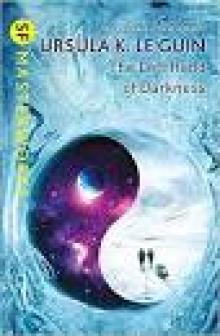 The Left Hand Of Darkness (SF Masterworks)
The Left Hand Of Darkness (SF Masterworks)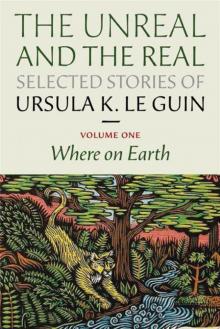 The Unreal and the Real - Vol 1 - Where On Earth
The Unreal and the Real - Vol 1 - Where On Earth The Visionary
The Visionary The Ones Who Walk Away from Omelas
The Ones Who Walk Away from Omelas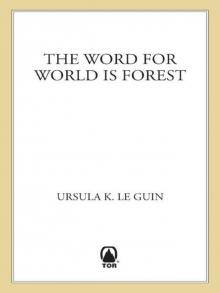 The Word for World is Forest
The Word for World is Forest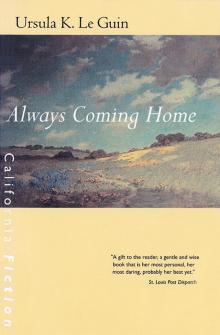 Always Coming Home
Always Coming Home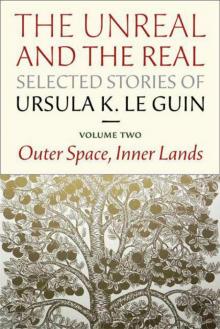 The Unreal and the Real - Vol 2 - Outer Space, Inner Lands
The Unreal and the Real - Vol 2 - Outer Space, Inner Lands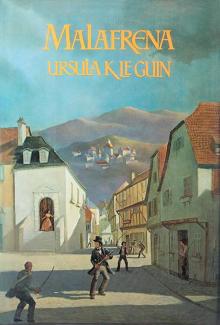 Malafrena
Malafrena The Lathe of Heaven
The Lathe of Heaven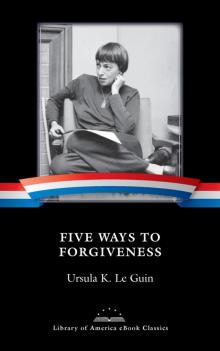 Five Ways to Forgiveness
Five Ways to Forgiveness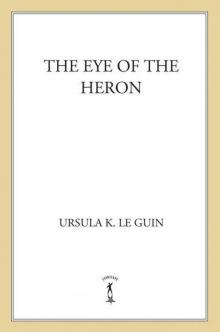 The Eye of the Heron
The Eye of the Heron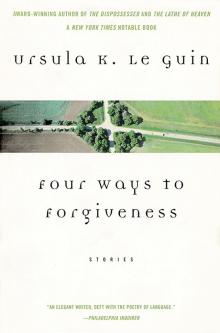 Four Ways to Forgiveness
Four Ways to Forgiveness Powers
Powers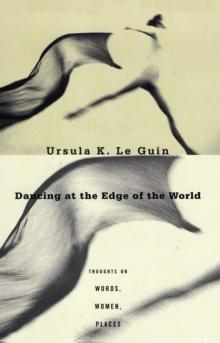 Dancing at the Edge of the World
Dancing at the Edge of the World Very Far Away from Anywhere Else
Very Far Away from Anywhere Else Voices aotws-2
Voices aotws-2 The New Atlantis
The New Atlantis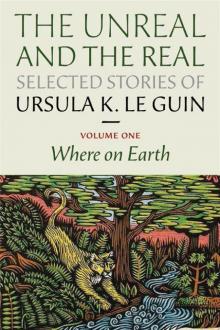 The Unreal and the Real, Selected Stories of Ursula K. Le Guin Volume 1: Where on Earth
The Unreal and the Real, Selected Stories of Ursula K. Le Guin Volume 1: Where on Earth The Telling
The Telling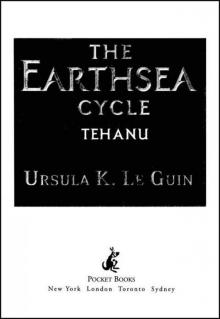 Tehanu (Earthsea Cycle)
Tehanu (Earthsea Cycle)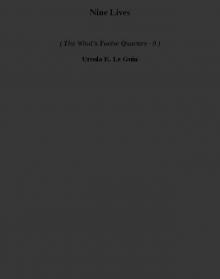 Nine Lives twtq-9
Nine Lives twtq-9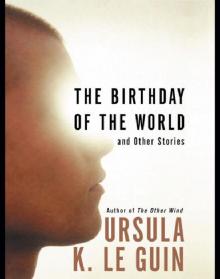 The Birthday of the World and Other Stories
The Birthday of the World and Other Stories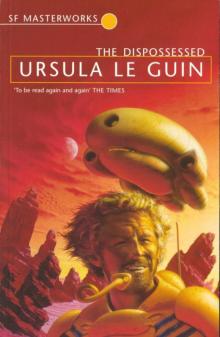 The Dispossessed
The Dispossessed Changing Planes
Changing Planes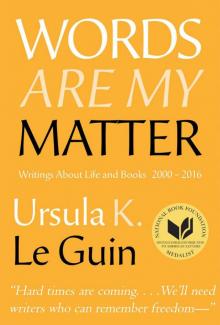 Words Are My Matter
Words Are My Matter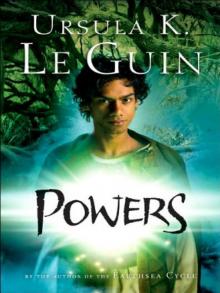 Powers aotws-3
Powers aotws-3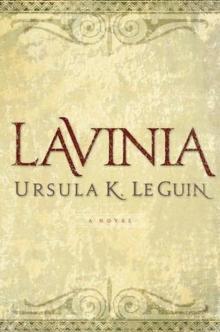 Lavinia
Lavinia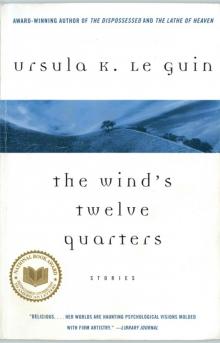 The Wind's Twelve Quarters
The Wind's Twelve Quarters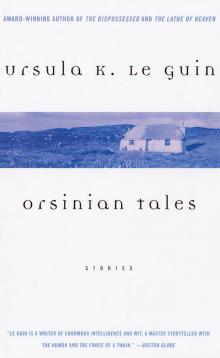 Orsinian Tales
Orsinian Tales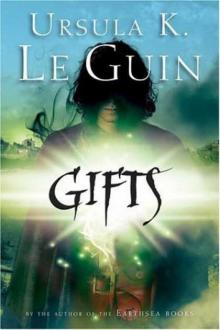 Gifts aotws-1
Gifts aotws-1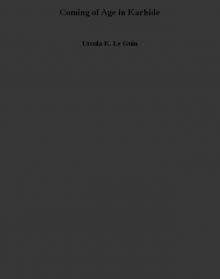 Coming of Age in Karhide
Coming of Age in Karhide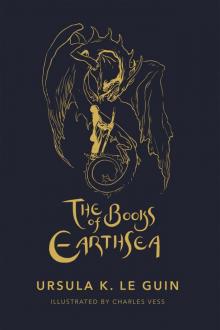 The Books of Earthsea: The Complete Illustrated Edition
The Books of Earthsea: The Complete Illustrated Edition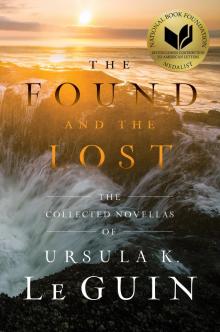 The Found and the Lost
The Found and the Lost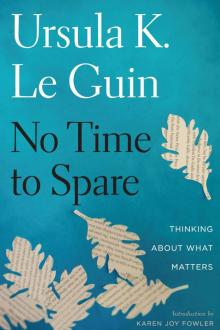 No Time to Spare
No Time to Spare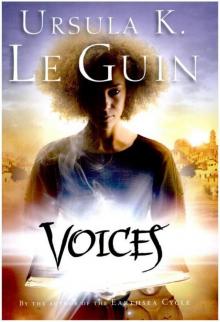 Voices
Voices The Wild Girls
The Wild Girls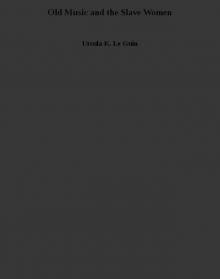 Old Music and the Slave Women
Old Music and the Slave Women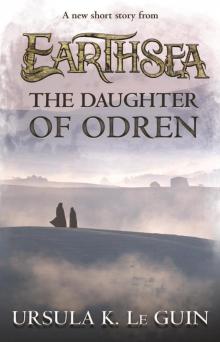 The Daughter of Odren
The Daughter of Odren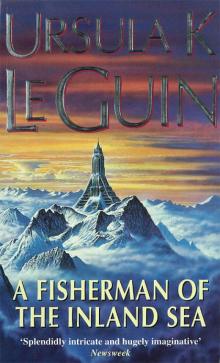 A Fisherman of the Inland Sea: Stories
A Fisherman of the Inland Sea: Stories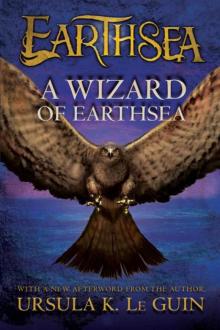 A Wizard of Earthsea (The Earthsea Cycle)
A Wizard of Earthsea (The Earthsea Cycle)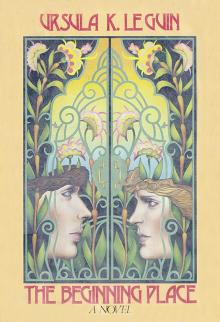 The Beginning Place
The Beginning Place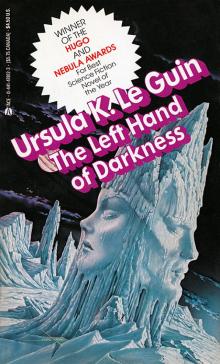 The Left Hand of Darkness
The Left Hand of Darkness The Farthest Shore (Earthsea Cycle)
The Farthest Shore (Earthsea Cycle)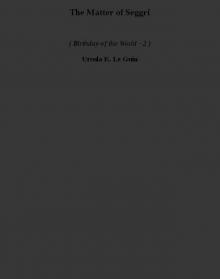 The Matter of Seggri botw-2
The Matter of Seggri botw-2